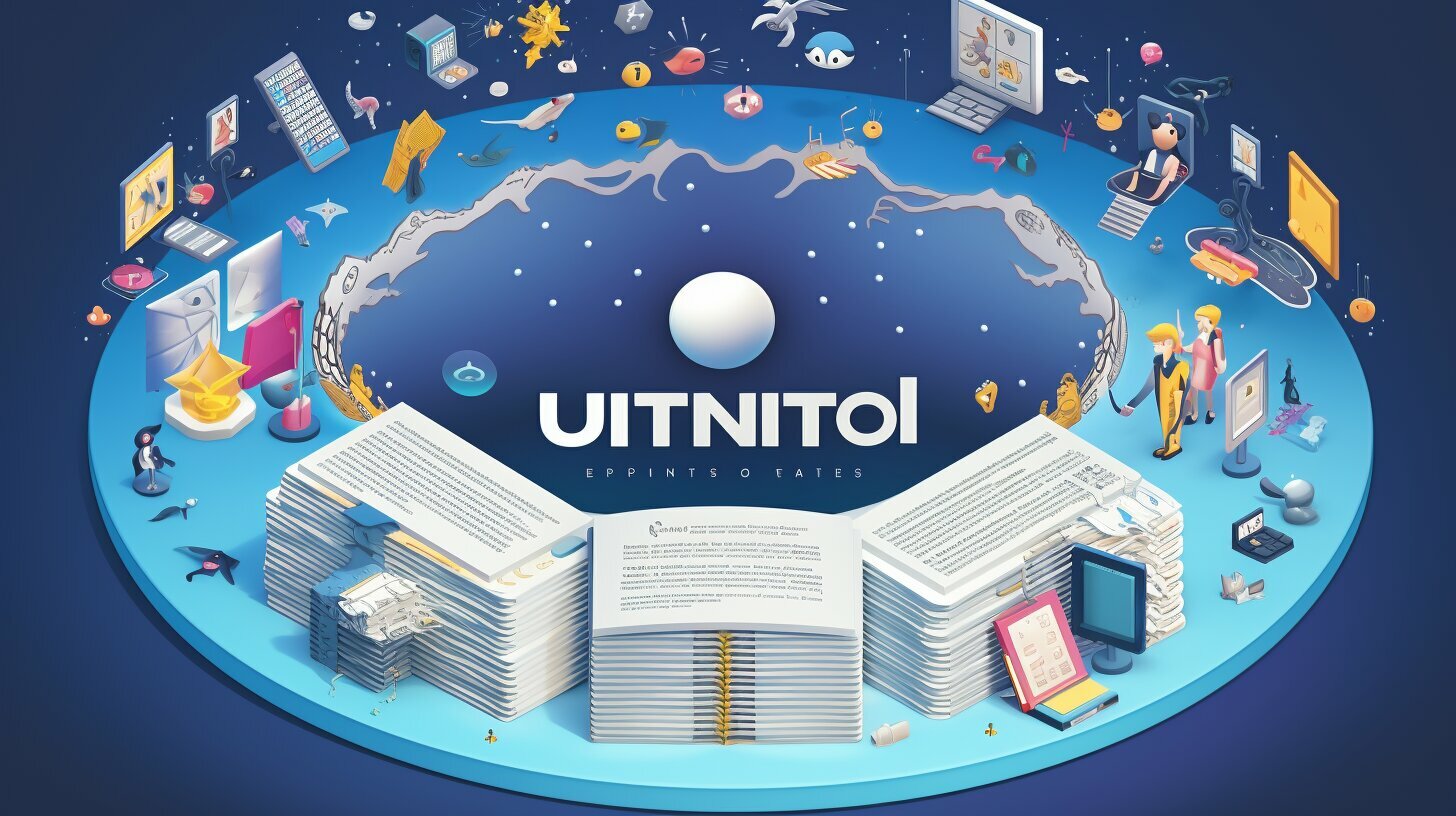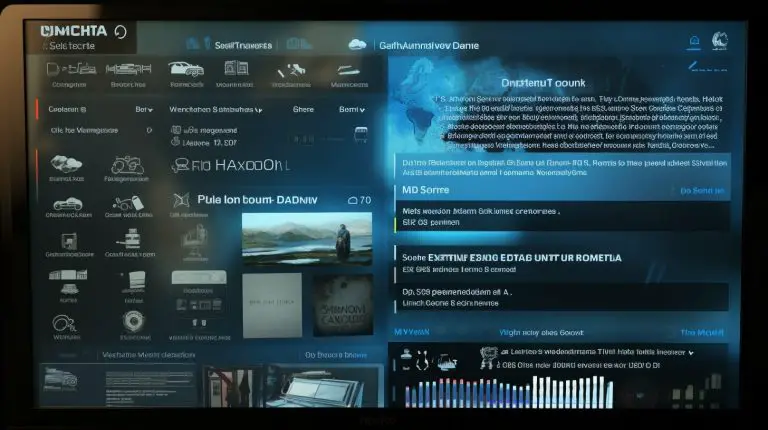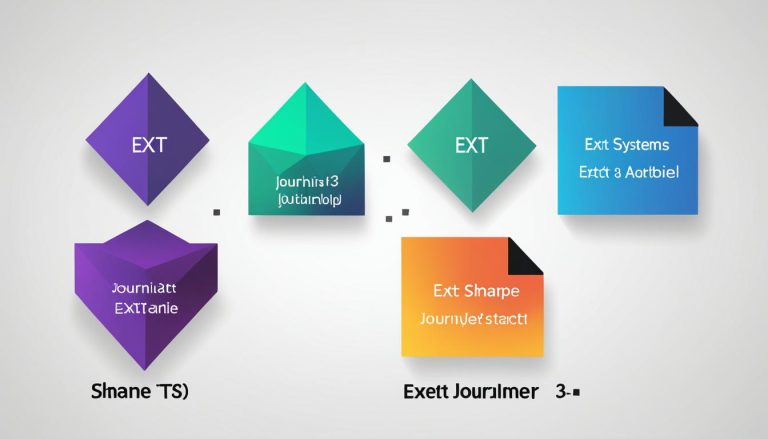Unveiling What is CentOS Linux: The Ultimate Guide
CentOS Linux is an open-source project that offers a powerful and versatile operating system for tech professionals across the United States. It provides a stable and secure environment for various applications and is derived from the source code released by Red Hat, a leading provider of enterprise Linux solutions.
CentOS Linux is known for its compatibility, allowing users to easily install and configure a wide range of software applications. It is also highly customizable, enabling tech professionals to tailor their systems to meet specific needs and requirements.
As the CentOS Project discontinues updates and releases of CentOS Linux between 2021 and 2024, users will need to choose a migration path. Fortunately, there are alternative distributions available, such as AlmaLinux, Rocky Linux, Oracle Linux, and VzLinux, that offer similar functionalities and support.
Key Takeaways:
- CentOS Linux is an open-source operating system widely used by tech professionals in the United States.
- It provides a stable and secure environment for various applications and is derived from the source code released by Red Hat.
- CentOS Linux offers compatibility and customizability, allowing users to install and configure a wide range of software applications.
- As the CentOS Project discontinues updates, users need to consider alternative distributions like AlmaLinux, Rocky Linux, Oracle Linux, or VzLinux.
- CentOS 9 Stream, a rolling release distribution, offers cutting-edge features but may not be suitable for production environments that require rock-solid stability.
Understanding the Origins of CentOS Linux
CentOS Linux is derived from the source code released by Red Hat Enterprise Linux, making it a reliable and stable option for businesses and individuals alike. As an open-source project, CentOS Linux provides a free and community-driven alternative to commercial Linux distributions. It inherits many of the features and benefits of its upstream source, while also adding its own unique value.
CentOS Linux started as a rebuild of Red Hat Enterprise Linux (RHEL), with the goal of providing a compatible and free distribution. This meant that CentOS Linux could be used as a drop-in replacement for RHEL, offering the same core functionality and support for enterprise-grade applications.
One of the key advantages of CentOS Linux is its strong commitment to stability and security. With its origins in the source code of RHEL, CentOS Linux benefits from extensive testing, bug fixes, and security updates. This ensures that the distribution remains reliable and secure, making it an ideal choice for mission-critical systems and sensitive data.
Furthermore, CentOS Linux enjoys a large and active community of developers and users who contribute to its ongoing development and provide support through forums and documentation. This vibrant community ensures that CentOS Linux remains up-to-date and well-maintained, with new features and improvements regularly being added.
The Heritage and Future of CentOS Linux
With its strong connection to Red Hat Enterprise Linux, CentOS Linux has built a solid reputation as a trustworthy and powerful operating system. However, it’s important to note that the CentOS Project announced changes to the CentOS Linux distribution, which will transition from a stable release to CentOS Stream, an upstream development platform for future releases of RHEL.
| CentOS Linux | CentOS Stream |
|---|---|
| Stable and reliable | Continuously evolving |
| Perfect for production environments | Ideal for developers and tech enthusiasts |
| Long-term support | Rapid release cycles |
Therefore, if you are looking for a stable and long-term support option, CentOS Linux is a great choice. However, if you want to access cutting-edge features and actively contribute to the development of Red Hat Enterprise Linux, CentOS Stream might be more suitable for you.
Key Features of CentOS Linux
CentOS Linux offers a host of features that make it a popular choice among tech professionals, providing a secure and reliable platform for a variety of uses. Whether you are a developer, enterprise user, or simply curious about open-source operating systems, CentOS Linux has something to offer.
Versatility
One of the key benefits of CentOS Linux is its versatility. It supports a wide range of software applications and programming languages, making it an ideal choice for developers who require a flexible and customizable environment. Furthermore, CentOS Linux can be used for various purposes, from hosting web servers and running databases to developing and testing software.
Security
CentOS Linux is known for its strong security features, making it a reliable choice for organizations that prioritize data protection. It benefits from the robust security measures present in Red Hat Enterprise Linux, including SELinux (Security Enhanced Linux) and regular security updates. CentOS Linux also has a large community of users and developers who actively contribute to maintaining its security.
Compatibility
Another advantage of CentOS Linux is its compatibility with a wide range of software and hardware. It offers long-term support for various applications and technologies, making it suitable for both legacy systems and the latest innovations. CentOS Linux ensures smooth interoperability with other Linux distributions and can seamlessly integrate into existing infrastructure.
| Feature | Description |
|---|---|
| Versatility | Supports a wide range of software applications and programming languages. |
| Security | Benefit from robust security measures, regular updates, and a strong community focus on maintaining the system’s security. |
| Compatibility | Compatible with various software and hardware, ensuring smooth interoperability and integration with existing infrastructure. |
Overall, CentOS Linux offers a powerful and feature-rich operating system that caters to the needs of tech professionals. Its versatility, security, and compatibility make it a reliable and trusted choice for a wide range of use cases, from small-scale development projects to enterprise-level deployments. With the discontinuation of CentOS Linux updates and releases, users will need to explore migration options, but CentOS Linux’s legacy and community support ensure that it will remain a valuable choice in the Linux ecosystem.
Migration Path for CentOS Linux Users
With the discontinuation of updates and releases for CentOS Linux between 2021 and 2024, it is crucial for users to carefully consider their migration path to ensure uninterrupted support and stability. The CentOS Project’s decision to shift focus to CentOS Stream has prompted users to explore alternative distributions that can meet their needs.
Exploring Alternative Linux Distributions
There are several alternative Linux distributions available for users seeking a migration path from CentOS Linux. These distributions, such as AlmaLinux, Rocky Linux, Oracle Linux, and VzLinux, aim to provide a seamless transition for CentOS users. Each distribution offers its own unique features and advantages, giving users a range of options to choose from.
When evaluating these alternatives, it is important to consider factors such as community support, long-term stability, and compatibility with existing software solutions. Many of these distributions have been developed with the goal of maintaining a CentOS-like experience, ensuring that users can continue to leverage their existing knowledge and workflows.
While each distribution has its own strengths and weaknesses, the choice ultimately depends on the specific requirements and preferences of each user. It is recommended to carefully assess the features and advantages of each alternative distribution to make an informed decision that aligns with individual needs.
| Distribution | Features |
|---|---|
| AlmaLinux | Community-driven, RHEL-compatible, long-term support |
| Rocky Linux | Developed by the original CentOS co-founder, RHEL-compatible |
| Oracle Linux | Enterprise-grade, optimized for Oracle applications |
| VzLinux | Optimized for virtualized environments, enhanced security features |
By carefully considering the importance of CentOS Linux and its advantages, users can make an informed decision when choosing their migration path. Exploring alternative distributions will help ensure a smooth transition and uninterrupted support for their Linux environment.
Introducing CentOS Stream
CentOS Stream acts as a bridge between the stable CentOS Linux releases and the latest advancements in Red Hat Enterprise Linux, offering developers a platform to test and contribute to future releases. As an open-source project, CentOS Stream provides a rolling release distribution that allows users to access cutting-edge features and software versions. This makes it an excellent choice for those who want to stay ahead of the curve and actively participate in the development process.
CentOS Stream Features
CentOS Stream offers a range of features that set it apart as a valuable tool for developers. Firstly, it provides a stable foundation with regular updates, ensuring that users have access to the most recent bug fixes and security patches. Additionally, CentOS Stream integrates seamlessly with Red Hat’s ecosystem, making it easier to align with the development efforts of Red Hat Enterprise Linux. This compatibility allows developers to test their applications on CentOS Stream before deploying them on Red Hat Enterprise Linux, minimizing compatibility issues and ensuring smoother transitions. Furthermore, CentOS Stream offers a collaborative environment, enabling developers to contribute directly to the project by submitting patches and enhancements.
To summarize, CentOS Stream serves as a valuable platform for developers who wish to actively engage in the future development of Red Hat Enterprise Linux. Its rolling release model, stability, compatibility, and collaborative nature make it an attractive choice for those seeking an open-source distribution that provides an opportunity to contribute, while still benefiting from a stable and reliable operating environment.
| Key Features of CentOS Stream |
|---|
| Rolling release distribution |
| Regular updates and bug fixes |
| Seamless integration with Red Hat Enterprise Linux |
| Collaborative environment for developers |
By embracing CentOS Stream, developers can actively contribute to the future of Linux distributions while benefiting from the stability and reliability of CentOS Linux. With its innovative features and collaborative community, CentOS Stream provides a platform for developers to shape the next generation of open-source software.
Pros and Cons of CentOS Stream
While CentOS Stream provides access to cutting-edge features and software versions, it may not be suitable for all production environments that require rock-solid stability. Let’s take a closer look at the pros and cons of using CentOS Stream.
Benefits of CentOS Stream
CentOS Stream offers several advantages for developers and tech enthusiasts. First and foremost, it serves as the upstream development platform for future releases of Red Hat Enterprise Linux. This means that users can get early access to new features, improvements, and bug fixes before they are incorporated into the stable release of Red Hat Enterprise Linux.
Another benefit of CentOS Stream is its compatibility with a wide range of software applications. As an open-source project, CentOS Stream benefits from a large and active community of developers who contribute to its software repositories. This ensures that users have access to a vast selection of software packages, tools, and libraries to meet their specific needs.
Disadvantages of CentOS Stream
Despite its advantages, CentOS Stream may not be suitable for all use cases. One of the main disadvantages is its rolling release model. While this allows for continuous updates and the latest software versions, it also means that there is a higher risk of encountering stability issues. In production environments that require a stable and predictable operating system, CentOS Stream may not be the best choice.
Additionally, CentOS Stream’s focus on upstream development means that it may not receive the same level of support and attention as the stable release of Red Hat Enterprise Linux. This could potentially result in longer response times for bug fixes and security updates, which may be critical for organizations that prioritize stability and security above all else.
It is important to carefully consider your specific needs and requirements when deciding whether to use CentOS Stream. While it offers access to cutting-edge features and software versions, it may not be the most suitable option for all production environments. Alternatives like CentOS Linux, AlmaLinux, Rocky Linux, Oracle Linux, and VzLinux should also be evaluated to ensure the best fit for your particular use case.
Now, let’s take a look at a table summarizing the pros and cons of CentOS Stream:
| Pros | Cons |
|---|---|
| Early access to new features and improvements | Potential stability issues |
| Compatibility with a wide range of software applications | Possible longer response times for bug fixes and security updates |
Exploring Alternative Linux Distributions
If you are considering migrating from CentOS Linux, there are several alternative distributions available that can meet your specific requirements and preferences. These alternative distributions offer a range of features and benefits, ensuring that you can find the right fit for your needs.
AlmaLinux
AlmaLinux is a community-driven Linux distribution designed as a drop-in replacement for CentOS Linux. It aims to provide a stable and secure platform for enterprise workloads, with long-term support and compatibility with existing CentOS Linux deployments. AlmaLinux is backed by the community and offers a seamless transition for CentOS Linux users.
Rocky Linux
Rocky Linux is another CentOS Linux alternative developed by the original co-founder of CentOS. It offers a free and open-source enterprise-grade operating system that is compatible with CentOS Linux. Rocky Linux aims to provide a stable and reliable platform for businesses and organizations with long-term support and regular updates.
Oracle Linux
Oracle Linux is a distribution that is based on the open-source software of CentOS Linux. It offers enterprise-level performance, security, and scalability, making it suitable for businesses. Oracle Linux provides compatibility with existing CentOS Linux deployments and offers a range of tools and features tailored for enterprise use.
VzLinux
VzLinux is a commercially supported Linux distribution that is fully compatible with CentOS Linux. It offers long-term support, security updates, and stability, making it suitable for businesses and organizations. VzLinux aims to provide a seamless transition for CentOS Linux users with minimal effort and disruption.
| Alternative Distribution | Features |
|---|---|
| AlmaLinux | Stable, secure, and compatible with existing CentOS Linux deployments |
| Rocky Linux | Free, open-source, and enterprise-grade with long-term support |
| Oracle Linux | Enterprise-level performance, security, and scalability |
| VzLinux | Commercially supported, long-term support, and minimal disruption |
These alternative distributions offer a wide range of features and benefits that can cater to different use cases and requirements. Before making a decision, it is advisable to evaluate each distribution based on your specific needs and consider factors such as stability, support, compatibility, and community involvement.
CentOS 9 Stream: A Closer Look
CentOS 9 Stream offers the latest features and software versions while maintaining a higher level of stability, making it a compelling choice for those seeking a balance between innovation and reliability. As a rolling release distribution, CentOS 9 Stream provides users with continuous updates and access to cutting-edge technologies.
One of the key advantages of CentOS 9 Stream is its ability to deliver newer software versions more quickly than the traditional CentOS Linux, enabling users to take advantage of the latest features and enhancements. This makes CentOS 9 Stream particularly attractive to developers and tech enthusiasts who are eager to explore new tools and technologies.
In addition to its focus on innovation, CentOS 9 Stream also strives to maintain a higher level of stability compared to other rolling release distributions. While frequent updates can sometimes introduce challenges in production environments, CentOS 9 Stream aims to strike a balance by providing a reliable operating system that benefits from the continuous development and testing efforts of the CentOS community.
Table: CentOS 9 Stream Features
| Feature | Description |
|---|---|
| Continuous updates | Receive the latest software versions and security patches |
| Enhanced stability | Strives to maintain a reliable operating system |
| Access to cutting-edge technologies | Explore the latest tools and innovations in the Linux ecosystem |
| Support for developers | CentOS 9 Stream offers robust development tools and software repositories |
CentOS 9 Stream Stability
The stability of CentOS 9 Stream is a critical consideration for users, especially those deploying applications in production environments. While CentOS 9 Stream strives to maintain a higher level of stability, it’s important to note that the rolling release nature of the distribution means that updates and changes are continually being introduced.
This continuous development and evolution can introduce a level of unpredictability compared to more traditional release models. Therefore, enterprises and organizations requiring rock-solid stability may want to carefully consider their specific use cases and evaluate whether CentOS 9 Stream aligns with their requirements.
Ultimately, CentOS 9 Stream presents an attractive option for users who value the latest features and software versions while still maintaining a reasonable level of stability. By offering continuous updates and access to cutting-edge technologies, CentOS 9 Stream provides a platform for innovation without compromising on reliability.
CentOS Linux vs. CentOS Stream: Choosing the Right Option
CentOS Linux and CentOS Stream have distinct characteristics and use cases, and understanding their differences is crucial when determining which option best suits your requirements. CentOS Linux, derived from the source code released by Red Hat, offers a stable and reliable operating system with long-term support. It is well-suited for production environments that prioritize rock-solid stability and security. On the other hand, CentOS Stream serves as the upstream development platform for future releases of Red Hat Enterprise Linux, providing users with access to cutting-edge features and software versions.
One of the key differences between CentOS Linux and CentOS Stream is their release cycle. CentOS Linux follows a traditional release model, with updates and releases available for up to 10 years. This makes it an ideal choice for organizations that value long-term support and predictable updates. On the other hand, CentOS Stream follows a rolling release model, meaning that updates and new features are continuously added. This makes it a great option for developers and tech enthusiasts who want access to the latest innovations.
When it comes to stability, CentOS Linux is designed to provide a rock-solid and reliable foundation. It undergoes rigorous testing and certifications to ensure compatibility with a wide range of enterprise software solutions. CentOS Stream, on the other hand, offers a more dynamic and rapidly evolving platform. While it provides access to new features and software versions sooner, it may not be suitable for production environments that require maximum stability and predictability.
Comparison Table: CentOS Linux vs. CentOS Stream
| CentOS Linux | CentOS Stream | |
|---|---|---|
| Release Model | Traditional (Long-term support) | Rolling Release |
| Updates and Releases | Up to 10 years | Continuous updates |
| Stability | Rock-solid | Rapidly evolving |
| Main Use Cases | Production environments, stability-focused | Development, access to cutting-edge features |
Ultimately, the choice between CentOS Linux and CentOS Stream depends on your specific needs and preferences. If you require a stable and predictable operating system with long-term support, CentOS Linux is the recommended option. On the other hand, if you value access to the latest features and software versions for development purposes, CentOS Stream offers a more dynamic platform. It’s important to carefully evaluate your requirements and assess the potential impact of each option on your workflows before making a decision.
CentOS Linux for Enterprise Use
CentOS Linux is a trusted choice for businesses, offering a reliable and secure operating system that can support a wide range of enterprise applications and services. With its robust features and compatibility with various software solutions, CentOS Linux provides a solid foundation for businesses to build their IT infrastructure.
One of the key advantages of CentOS Linux for enterprise use is its security. The operating system is known for its strong security measures, including regular updates and patches to address vulnerabilities. This ensures that businesses can protect their sensitive data and systems from potential threats.
Additionally, CentOS Linux offers stability, making it suitable for mission-critical environments. The operating system is known for its rock-solid performance and long-term support, allowing businesses to run their applications and services reliably without disruptions.
Table: Comparison of CentOS Linux and CentOS Stream for Enterprise Use
| Feature | CentOS Linux | CentOS Stream |
|---|---|---|
| Stability | High | Rolling Release |
| Security | Regular Updates | Continuous Integration |
| Compatibility | Wide Range of Software | Upstream Development |
Furthermore, CentOS Linux provides compatibility with a wide range of enterprise software applications. Whether businesses require database management systems, web servers, or virtualization platforms, CentOS Linux can seamlessly integrate with these technologies, offering a flexible and scalable solution.
By leveraging CentOS Linux for their enterprise needs, businesses can benefit from a vibrant and supportive community. The CentOS Linux community provides forums, documentation, and official channels for users to seek assistance, share knowledge, and collaborate with like-minded professionals.
In conclusion, CentOS Linux is a reliable and secure operating system that businesses can trust for their enterprise needs. With its stability, compatibility, and supportive community, CentOS Linux offers a solid foundation for businesses to build their IT infrastructure and run their applications with confidence.
CentOS Linux for Developers
CentOS Linux provides developers with a powerful platform for software development, offering a rich toolkit and extensive library of development resources. Whether you are a seasoned developer or just starting your coding journey, CentOS Linux has the tools and support you need to build robust and scalable applications.
One of the key advantages of using CentOS Linux as a development environment is its vast repository of development tools. From popular programming languages like Python, Java, and C++, to code editors and debuggers, CentOS Linux offers a comprehensive collection of software that caters to the diverse needs of developers. These development tools are constantly updated and maintained by the CentOS community, ensuring that you have access to the latest features and bug fixes.
In addition to the development tools, CentOS Linux boasts a vibrant community of developers who actively contribute to the project and provide support through forums, documentation, and other resources. Being part of this active community allows developers to collaborate, share knowledge, and seek assistance when faced with challenges. The collaborative nature of the community fosters innovation and helps developers stay up to date with the latest trends and best practices in the industry.
Development Tools in CentOS Linux
When it comes to development tools, CentOS Linux has you covered. Here are some of the tools you can expect to find in CentOS Linux:
| Category | Tools |
|---|---|
| Editors | Vim, Emacs, Sublime Text |
| Integrated Development Environments (IDEs) | Eclipse, Visual Studio Code, NetBeans |
| Version Control Systems | Git, Mercurial, Subversion |
| Compilers | GCC, Clang |
| Package Managers | Yum, RPM |
These are just a few examples of the wide range of development tools available in CentOS Linux. Whether you are working on a personal project or collaborating on a large-scale software development initiative, CentOS Linux provides the necessary tools to simplify your development workflow and increase productivity.
So, if you are a developer looking for a reliable and feature-rich Linux distribution for your software development needs, CentOS Linux is an excellent choice. With its extensive collection of development tools and strong community support, CentOS Linux empowers developers to create cutting-edge applications and push the boundaries of innovation.
CentOS Linux Community and Support
The CentOS Linux community provides a valuable support network for users, offering assistance, guidance, and the opportunity to collaborate with like-minded individuals. Whether you’re a beginner or an experienced user, being part of this vibrant community can greatly enhance your CentOS Linux experience.
One of the key benefits of the CentOS Linux community is the availability of forums and discussion boards where users can ask questions, seek advice, and share their knowledge. These platforms serve as a valuable resource for troubleshooting issues, discovering new solutions, and staying up-to-date with the latest developments in the CentOS Linux ecosystem.
Additionally, the CentOS Linux community actively maintains and updates a comprehensive documentation library. This documentation covers a wide range of topics, including installation guides, configuration tutorials, and troubleshooting steps. It serves as a go-to resource for users looking for detailed information and step-by-step instructions on how to leverage the full potential of CentOS Linux.
Official channels and events
CentOS Linux users can also benefit from official channels and events organized by the community. These channels include social media groups, mailing lists, and IRC chat rooms, where users can engage with developers, contributors, and other community members. Furthermore, the CentOS Linux community regularly hosts local and global events, including meetups, conferences, and workshops, providing opportunities for networking, learning, and exchanging ideas.
“The sense of camaraderie and collaboration within the CentOS Linux community is truly inspiring. It’s empowering to be part of such a passionate and supportive group of individuals who are dedicated to the advancement of this open-source project.”
In conclusion, the CentOS Linux community plays a crucial role in the success and popularity of this operating system. By joining this community, users gain access to a wealth of knowledge, support, and networking opportunities. Whether you’re a developer, a system administrator, or an enthusiast, being part of the CentOS Linux community can greatly enhance your experience and help you make the most out of this versatile and reliable operating system.
Best Practices for CentOS Linux Configuration and Management
To ensure optimal performance and security, it is important to follow best practices when configuring and managing your CentOS Linux environment. By adhering to these guidelines, you can maximize the efficiency and reliability of your system.
1. Regular System Updates:
Keep your CentOS Linux installation up to date by regularly installing system updates. These updates include patches for security vulnerabilities, bug fixes, and enhancements. You can use the yum package manager to easily manage updates. Schedule automatic updates to ensure your system remains protected without manual intervention.
2. Secure Your System:
Implementing proper security measures is crucial to protect your CentOS Linux environment. Configure firewalls, enable SELinux (Security-Enhanced Linux) for enhanced access control, and set up intrusion detection systems to monitor for any suspicious activity. Regularly review and tighten security settings using tools like iptables and fail2ban to safeguard your system from potential threats.
3. Optimize Network Configuration:
Optimize your network configuration to ensure smooth and efficient communication between your CentOS Linux system and other devices. Consider factors such as IP addressing, DNS resolver settings, network interface bonding, and traffic shaping. Use tools like nmcli or nmtui to manage network settings effectively.
4. Performance Optimization:
Enhance the performance of your CentOS Linux system by optimizing resource utilization and fine-tuning system parameters. Use tools like systemd and sysctl to manage system services and kernel parameters. Monitor system performance using utilities like top, vmstat, and sar, and adjust configurations as needed to improve responsiveness and minimize resource bottlenecks.
5. Backup and Recovery:
Implement a robust backup and recovery strategy to protect your critical data and ensure business continuity. Regularly back up your system files, databases, and any other important data to an external storage device or a remote server. Test your backup procedures periodically to verify their reliability and practice restoring from backups to ensure a quick recovery in case of a disaster.
6. Documentation and Monitoring:
Document your configuration and management procedures to maintain an organized and transparent system. Keep track of changes, configurations, and troubleshooting steps. Set up monitoring tools such as Nagios or Zabbix to receive alerts and proactively identify any potential issues. Regularly review logs, system statistics, and performance metrics to detect and address any anomalies promptly.
7. Training and Support:
Stay updated with the latest CentOS Linux best practices by participating in training programs, webinars, and events offered by the CentOS community. Engage with the community through forums, mailing lists, and social media channels to seek support and share knowledge. Collaborate with other CentOS Linux users and experts to exchange ideas and solutions to common challenges.
Following these best practices will help you maintain a secure, optimized, and well-documented CentOS Linux environment. By implementing these guidelines, you can ensure the stability and reliability of your system while leveraging the power and flexibility of the CentOS Linux distribution.
CentOS Linux in the Future
The CentOS Linux project continues to evolve and adapt to the changing needs of users, with exciting advancements planned for the future. As an open-source project that prides itself on community collaboration, CentOS Linux is committed to delivering a powerful and reliable operating system that meets the requirements of developers, enterprises, and tech enthusiasts.
Looking ahead, the CentOS Linux roadmap reveals a focus on enhancing security, stability, and compatibility. The project aims to implement cutting-edge technologies and software updates to ensure that users have access to the latest advancements in the Linux ecosystem. This includes improvements in system updates, network configuration, and performance optimization to deliver an optimized user experience.
Upcoming Features and Innovations
The CentOS Linux project has several exciting developments in the pipeline. One of the key areas of focus is the integration of containerization technologies to facilitate the efficient deployment and management of applications. By leveraging containerization, users can benefit from enhanced scalability, resource utilization, and isolation, making development and deployment processes more streamlined and efficient.
Additionally, the project is working towards improving cloud-native capabilities, enabling seamless integration with cloud platforms such as Amazon Web Services (AWS), Microsoft Azure, and Google Cloud Platform (GCP). This integration will empower users to leverage the flexibility and scalability of cloud infrastructure while enjoying the stability and security of CentOS Linux.
Furthermore, the CentOS Linux project aims to strengthen its partnerships with industry leaders to foster greater collaboration and support. By working closely with hardware manufacturers, software vendors, and community contributors, CentOS Linux seeks to ensure seamless integration and compatibility across a wide range of systems and applications.
| New Features | Benefits |
|---|---|
| Enhanced security measures | Protects against emerging threats and vulnerabilities |
| Improved stability and performance | Delivers a reliable and optimized user experience |
| Containerization support | Streamlines application deployment and management |
| Cloud-native capabilities | Enables seamless integration with cloud infrastructure |
| Enhanced hardware and software compatibility | Supports a wide range of systems and applications |
In conclusion, the future of CentOS Linux looks promising, with continuous innovation and enhancements to ensure that users have a robust and versatile operating system at their disposal. Whether it’s for enterprise use, software development, or personal projects, CentOS Linux remains a strong contender in the Linux community, providing a powerful and reliable platform for a variety of user needs.
Conclusion
CentOS Linux offers a robust and feature-rich platform that caters to the needs of businesses, developers, and individuals, making it a top choice in the Linux ecosystem. With its origins rooted in Red Hat Enterprise Linux, CentOS Linux provides a reliable and secure operating system with an extensive range of benefits.
However, the recent announcement of changes to CentOS Linux’s update and release cycles has caused users to consider alternative options. Fortunately, several distributions, such as AlmaLinux, Rocky Linux, Oracle Linux, and VzLinux, offer viable migration paths for users seeking a stable and sustainable operating system.
For those looking to stay at the forefront of technology, CentOS Stream serves as an ideal choice. As the upstream development platform for future releases of Red Hat Enterprise Linux, CentOS Stream offers cutting-edge features and the latest software versions. However, it’s important to note that CentOS 9 Stream’s rolling release model may not be suitable for production environments that prioritize stability.
Regardless of the path chosen, CentOS Linux users can rely on the vibrant community and available support resources. Forums, documentation, and official channels provide valuable assistance in configuring, managing, and troubleshooting CentOS Linux systems. Being part of an active community ensures timely updates, valuable insights, and a collaborative environment to address any challenges.
FAQ
What is CentOS Linux?
CentOS Linux is an open-source project that releases two distinct Linux distributions: CentOS Stream and CentOS Linux. CentOS Linux is derived from source code released by Red Hat and offers a stable and reliable operating system.
What is the difference between CentOS Linux and CentOS Stream?
CentOS Linux is a traditional distribution that provides long-term support and stability, while CentOS Stream serves as the upstream development platform for future releases of Red Hat Enterprise Linux, offering cutting-edge features and software versions.
Will CentOS Linux be discontinued?
Yes, the CentOS Project has announced that it will discontinue updates and releases of CentOS Linux between 2021 and 2024. Users will need to choose a migration path to continue receiving support and updates.
What are the alternative distributions to CentOS Linux?
Some alternative distributions to consider as migration options from CentOS Linux include AlmaLinux, Rocky Linux, Oracle Linux, and VzLinux. These distributions aim to provide a stable and reliable operating system similar to CentOS Linux.
What is CentOS Stream used for?
CentOS Stream serves as the upstream development platform for upcoming releases of Red Hat Enterprise Linux. It allows developers and tech enthusiasts to access and contribute to the latest features and improvements in the development process.
What are the pros and cons of CentOS Stream?
CentOS Stream offers access to cutting-edge features and software versions, making it suitable for developers and tech enthusiasts. However, it may not provide the same level of stability as CentOS Linux, making it less suitable for production environments that require rock-solid stability.
How do I choose between CentOS Linux and CentOS Stream?
The choice between CentOS Linux and CentOS Stream depends on your specific needs. If you prioritize stability and long-term support, CentOS Linux is the better option. If you desire access to the latest features and the ability to contribute to the development process, CentOS Stream may be more suitable.
Is CentOS Linux suitable for enterprise use?
Yes, CentOS Linux is widely used in enterprise environments due to its stability, security, and compatibility with various enterprise software solutions. It provides a reliable operating system for businesses of all sizes.
Is CentOS Linux suitable for developers?
Yes, CentOS Linux offers a range of development tools, software repositories, and support for various programming languages, making it an excellent choice for developers. It provides a robust platform for software development and testing.
Where can I find support for CentOS Linux?
CentOS Linux has a vibrant community that provides support through forums, documentation, and official channels. Being part of an active community allows users to collaborate, seek assistance, and share knowledge.
What are the best practices for configuring and managing CentOS Linux?
Best practices for configuring and managing CentOS Linux include regularly updating the system, configuring security settings, optimizing network configuration, and monitoring performance. These practices ensure a secure and efficient operating environment.
What is the future of CentOS Linux?
The future of CentOS Linux involves the development of CentOS Stream to serve as the upstream platform for Red Hat Enterprise Linux. The CentOS community will continue to contribute to the project, ensuring its evolution and growth.
- About the Author
- Latest Posts
Mark is a senior content editor at Text-Center.com and has more than 20 years of experience with linux and windows operating systems. He also writes for Biteno.com






